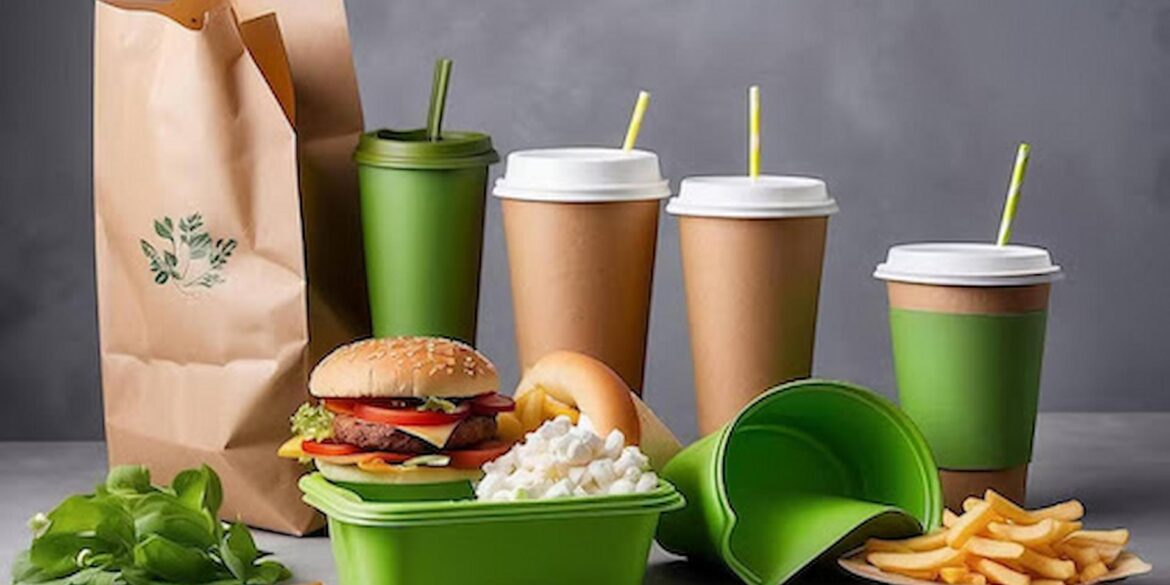Food packaging is vital for keeping food fresh and safe, but traditional packaging generates tons of waste. Learn how to switch to sustainable options without compromising quality.
Plastic waste from food packaging is a growing environmental problem. Every year, millions of tons of plastic end up in landfills and oceans, harming wildlife and contributing to pollution. However, sustainable food packaging is a practical solution that reduces waste while maintaining food safety and quality.
Consumers are now more conscious of their choices, and businesses must adapt to eco-friendly alternatives. But is it possible to use sustainable packaging without sacrificing product quality? The answer is yes! This article will explore various sustainable food packaging options, their benefits, and how businesses can transition smoothly.
Why Sustainable Food Packaging Matters
The Environmental Impact of Traditional Packaging
- Over 380 million tons of plastic are produced globally every year.
- Only 9% of plastic waste is recycled; the rest is in landfills or oceans.
- Plastic packaging takes hundreds of years to decompose, releasing harmful chemicals into the environment.
Traditional food packaging, especially single-use plastics, is a major contributor to pollution. These materials take centuries to break down, threatening wildlife and ecosystems. Switching to sustainable packaging helps reduce carbon emissions, conserve resources, and minimise waste.
Consumer Demand for Eco-Friendly Packaging
- 73% of consumers are willing to pay more for sustainable packaging.
- Eco-conscious customers prefer brands that use recyclable or biodegradable materials.
Sustainability is no longer just an ethical choice—it’s a business necessity. More consumers expect companies to adopt green practices. Brands that invest in sustainable food packaging help the planet and attract eco-conscious buyers.
Key Characteristics of Sustainable Food Packaging
For packaging to be truly sustainable, it should have these qualities:
1. Biodegradable or Compostable
- Breaks down naturally without leaving toxic residues.
- Examples: Plant-based plastics, cornstarch packaging, and mushroom packaging.
2. Recyclable
- It can be processed into new materials, reducing waste.
- Examples: Glass, metal, and specific paper-based packaging.
3. Reusable
- Designed for multiple uses to minimise waste.
- Examples: Glass jars, metal tins, and reusable fabric wraps.
4. Made from Renewable Resources
- Derived from natural sources that replenish quickly.
- Examples: Bamboo, sugarcane fibre, and seaweed-based packaging.
- Businesses and consumers can significantly reduce waste and environmental harm by choosing packaging that meets these criteria.
Sustainable Food Packaging Materials: Best Alternatives to Plastic
1. Plant-Based Packaging
Plant-based packaging is biodegradable and compostable. It is derived from renewable sources like cornstarch, bamboo, or sugarcane. Many food brands now use plant-based bioplastics instead of petroleum-based plastic.
2. Recycled Paper and Cardboard
Paper-based packaging is lightweight, recyclable, and often compostable. Many companies adopt FSC-certified paper (Forest Stewardship Council) to ensure responsible sourcing.
3. Glass Containers
Glass is 100% recyclable and does not degrade in quality even after multiple recycling processes. It’s an excellent option for food storage, as it doesn’t leach chemicals into food.
4. Edible Packaging
Some innovative brands are developing packaging made from seaweed, rice, or milk proteins that can be eaten with the food. It eliminates waste.
5. Mushroom-Based Packaging
- Mushroom mycelium packaging is biodegradable and compostable. It’s an alternative to Styrofoam for food trays and protective packaging.
- Choosing the right sustainable material depends on the type of food, cost considerations, and availability.
How Businesses Can Transition to Sustainable Food Packaging
1. Assess Your Current Packaging
- Identify materials that contribute the most to waste.
- Determine which packaging can be replaced with sustainable alternatives.
2. Source Eco-Friendly Packaging Suppliers
- Look for certified sustainable suppliers with proven eco-friendly materials.
- Ensure compliance with food safety regulations.
3. Educate Consumers
- Clearly label packaging as biodegradable, recyclable, or compostable.
- Provide instructions on how to dispose of packaging appropriately.
4. Start with Small Changes
- Replace plastic straws with paper or metal ones.
- Introduce compostable takeout containers.
- Use recycled paper bags instead of plastic ones.
5. Monitor and Improve
- Track waste reduction metrics.
- Gather customer feedback on packaging preferences.
- Continuously improve based on sustainability goals.
- Transitioning doesn’t have to be costly or complicated. Gradual changes can make a significant impact.
Benefits of Sustainable Food Packaging for Businesses
1. Cost Savings in the Long Run
- While sustainable materials may have higher upfront costs, they reduce waste management expenses.
- Many governments offer tax incentives for using eco-friendly packaging.
2. Enhanced Brand Reputation
- Companies that prioritise sustainability build trust and loyalty.
- A positive brand image attracts environmentally conscious customers.
3. Compliance with Regulations
- Many countries are banning single-use plastics.
- Switching to sustainable packaging ensures compliance with environmental laws.
4. Competitive Advantage
- Businesses with sustainable packaging stand out in the market.
- Many retailers and food chains prefer suppliers with green packaging.
- Sustainability is not just about reducing waste; it’s also a smart business strategy.
Conclusion
Sustainable food packaging is no longer an option—it’s a necessity. With increasing environmental concerns and changing consumer expectations, businesses must adopt eco-friendly solutions. From plant-based plastics to edible packaging, there are many innovative alternatives available.
Transitioning to sustainable food packaging helps reduce waste, protect the environment, and improve brand reputation. While challenges exist, the long-term benefits outweigh the costs. Businesses and consumers can make conscious choices today to contribute to a cleaner, greener future.
Are you ready to make the switch? Start small, educate your customers, and embrace sustainable food packaging solutions today.

